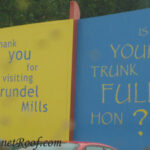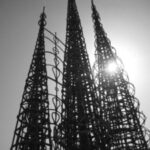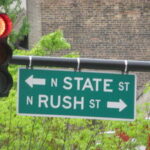Just west of the famous downtown area in Los Angeles you’ll find one of the most vibrant neigborhoods in Los Angeles. Often overlooked for it’s neighbors Hollywood and Beverly Hills, Koreatown is one of Los Angeles hidden treasures.
Ktown in many ways serves as a model for the future of Los Angeles. The area is known for it’s many high-rise commercial and residential buildings, the area is the most densely populated in Los Angeles. As a result, Koreatown is the most pedestrian friendly neighborhood in Los Angeles, and is in fact considered one of the most walkable neighborhoods in the US.
Koreatown is located along Wilshire Boulevard, just left of the Los Angeles downtown ares. This area was first settled in the late 1800’s. After the real estate market in Los Angeles crashed in 1888, Henry Gaylord Wilshire bought large lots in the area that today is Koreatown. Wilshire agreed to let the city build a street across his property, in exchange for it to be named after him.
The area boomed in the 1920, a number of hotels and New York style high-rise apartment buildings where built. It’s close proximity to Hollywood and the surge of new exclusive real estate, made the Mid-Wilshire area very popular with the city’s elite. Several of the biggest movie stars lived in the area, and many of Charlie Chaplin’s famous movies were filmed in Westland Park.
During the 1930’s the ties to Hollywood grew even stronger, the Academy Awards were hosted at The Ambassador Hotel for a number of years and many of the most influential families of the time relocated to the area. Wilshire boulevard at this time came to be the most famous street in Los Angeles, overshadowing even Hollywood Boulevard as the spot for the stars to be seen.
In the 1950’s Los Angles was spreading out, and many businesses moved out of the downtown area to the high-rises along Wilshire Boulevard. A number of tall office buildings were erected, further establishing the characteristics of the area. The trend of moving out of the city core accelerated with the construction of several new freeways in the late 1950’s. The businesses that had moved to Wilshire a decade earlier continued westward and left the Mid-Wilshire to face a lengthy decline.
The falling real estate prices attracted many Korean immigrants, and the neighborhood started it’s transformation into a Korean community. With the restrictions on immigration from East Asia to the US lifted in 1965, the flow of Korean immigrants increased dramatically. The Korean immigrants changed the face of the are which is now dominated by Korean street signs and a night life that many say is remnant of Seoul.
The neighborhood now permanently renamed Koreatown would face more hardship. The 1992 Los Angeles riots hit Koreatown harder than any other part of Los Angeles. The display of wealth and the many electronics stores attracted looters and rioters who hit Koreatown hard. The police were forced out by rioters, which lead to the formation of vigilante groups that engaged in open gunfights in the streets of Koreatown. When order was restored after six days of riots, countless businesses were looted and burned, and many Koreans attacked and beaten in the streets.
The riots prompted many Koreans to leave Koreatown, and again the neigborhood fell into decline. The real estate prices crashed and the area for a while had the lowest real estate prices in Los Angeles. To reverse the downturn for the neighborhood, a number of building codes and regulations were removed in an effort to stimulate development. The density of the area was seen as the ideal way to combat the exploding traffic problems and lack of real estate in Los Angeles. The record low real estate prices attracted many foreign investors, and Koreatown again saw a building boom that has carried into today.
As the neighborhood has been recovering, more and more Koreans have returned to Koreatown which has turned Koreatown into one of the most culturally diverse neighborhoods in Los Angeles. There’s a vibrant night life, fueled by an influx of students from UCLA and USC that have moved into the area taking advantage of the still modest cost of real estate and excellent public transportation. Koreatown is the closest to a 24 hour district in Los Angeles with the highest concentration of night clubs and restaurants in Southern California. The nigh life has a distinct Korean flair as the streets are lined with karaoke bars, pool halls and internet bars.
Koreatown is truly one of the most colorful and diverse neighborhoods in Los Angeles. The area has seen it’s fair shares of ups and downs, form being the playground of the stars, to being burned to the ground as the Los Angeles turned on itself. Today, Koreatown is booming and diversifying even further. Already ethnically diverse, the city is attracting hipsters as well as the gay and lesbian community and a growing student demographic. Whether you want to experience Los Angeles on foot, want to sample the restaurant life, or want to hit the clubs, you should give Koreatown a visit.






